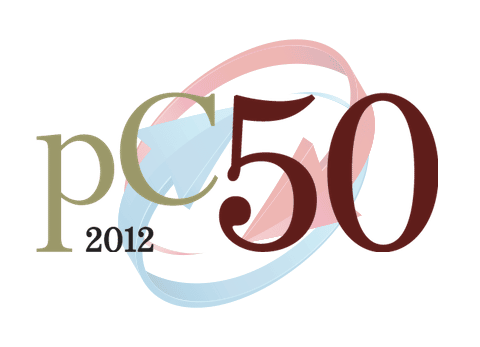
There is no doubt who the biggest dog on the digital-media block is. Google (again) tops our paidContent 50 list. It accounted for a full quarter of the total digital revenues on the list.
But the Mountain View firm’s growth came not from successful expansion into new revenue lines like social or mobile. No, it came from the company’s ability to wring more and more out of its existing core business: advertising. Google, which changed leadership last year to refocus on product innovation, makes almost eight times more from online ads than even the world’s largest advertising agency, WPP.
Changing of the guard
Another individual story that jumps from the list: Apple leapfrogging Yahoo. Yahoo lost a fifth of its revenue in 2011, while Apple piled on another $1.3 billion (30 percent) in digital content sales from new iPad owners, new in-app subscriptions and customers in new countries.
Despite its travails, Yahoo is by no means a dead duck. But we think the open web’s biggest ad-funded portal has passed the runner-up-to-Google baton to Apple’s device-centric retail ecosystem. We look forward to seeing how Yahoo’s latest CEO, Marissa Mayer, intends to make up ground on Apple and her former employer, Google.
Few on our list have surged quite like the world’s biggest social network. Facebook revenue more than tripled en route to its IPO, taking it past heavyweights and veterans like News Corp, Amazon, Walt Disney. Not bad for an outfit that, in its S-1 filing, conceded its own advertising model was essentially an experiment.
Trading places
This year’s paidContent 50, for the first time, looks at companies outside the U.S. and in segments not considered last year, like business information and advertising. As a consequence, several U.S. companies fell off this year’s list — including CareerBuilder, ValueClick, WebMD, GameStop, Hulu, the New York Times, Ancestry.com and Demand Media.
This doesn’t necessarily mean that they had a bad year — the New York Times’ digital earnings grew thanks to its new metered fees, Hulu’s content cash almost doubled from subscriptions and heightened ad sales, while Demand rode out Google’s indexing algorithm change to also earn more than last year.
Meanwhile, Groupon’s daily-deal revenue tripled through the year (allowing it to fall only one spot on our list, to #24), while Time Warner – which used the paidContent 50 to make its first ever company-wide digital content earnings disclosure – would have leaped 13 places if our list continued to focus on U.S. companies (instead, it dropped a few spots).
It came from the east
Indeed, opening the gates to the rest of the world adds some new perspective on the success of some of the largest U.S. digital players. Zynga, for example, suddenly falls 24 places, while Netflix sinks 14 places despite adding about $500,000 in revenue in an error-strewn year. Almost half of our list this year (23 companies) comes from outside the U.S.
China Mobile, the PC50’s top performer from the country with the largest internet population, is capitalizing on a mobile internet boom that, though it has happened later in China than the west, looks more profound. Sales of mobile data content propelled the carrier to #2 on our list.
Another Chinese company, Tencent, #9 on our list, is an internet brand so diverse it defies brief characterisation (though our profile makes an attempt). And South African old-line publisher Naspers is little talked about, but, at #22, you can see what its aggressive strategy of overseas online investments has done for the firm.
Check out the complete paidContent 50 list here